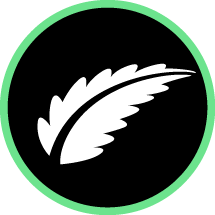
Cannabicyclol: What is CBL?
Cannabis researchers love learning about the compounds in marijuana, including cannabinoids. Sometimes, however, there are certain cannabinoids that evade even the smartest of scientists—and that’s exactly how we’d describe CBL. This mysterious cannabinoid is one we know very little about, but it’s still worth noting as one of the many compounds that contribute to the entourage effect. In this guide, we’re going to dive into the information we do have about CBL, including:
- What is CBL?
- Where is CBL Found?
- CBD vs CBL: What’s the Difference?
- THC vs CBL: What’s the Difference?
- CBC vs CBL: What’s the Difference?
What is CBL?
CBL, or cannabicyclol, is one of the many minor cannabinoids found within the marijuana plant. CBL is made when CBC, a separate cannabinoid, enters into the decarboxylation process. This breakdown can be because of acidic conditions, heat, light, or even air, but it all leads to the same thing—the production of CBL. Outside of how it’s created, the only other thing we know for sure about this mysterious little cannabinoid is that unlike THC, CBL has no psychoactive properties.
Where is CBL Found?
CBL can be found in both forms of cannabis—marijuana and hemp—but typically only in tiny traces. It was first discovered by Korte and Sieper in 1964, when they isolated this unique cannabinoid.Since its discovery, we’ve been able to see its chemical footprint in cannabis plants around the world, both young and old. In fact, scientists even discovered and studied an ancient strain of cannabis found in a Chinese tomb dating back thousands of years. Still present in that strain? CBL.
While we may recognize CBL now, we haven’t learned much more about it. This is due to a variety of reasons, including marijuana’s continued status as a Schedule I drug and the fact that this cannabinoid is found in such tiny amounts.
CBD vs CBL: What’s the Difference?
What we know so far is that CBD tends to be available in higher amounts in cannabis plants. CBL is typically only found in strains with a higher concentration of CBC (the cannabinoid that becomes CBL).
One of the biggest differences between CBD and CBL is in the sale of these unique compounds. Because CBL is relatively unknown and occurs in such small amounts, it’s very hard to create products that center around this minor cannabinoid. This is why you won’t find much, if any, CBL isolate or CBL products. However, CBD is something that is much more available from licensed marijuana retailers.
THC vs CBL: What’s the Difference?
There are a few differences between THC, or tetrahydrocannabinol, and CBL. First, THC is one of the main cannabinoids found in marijuana, and CBL exists in much smaller quantities. Second, THC is psychoactive and CBL isn’t—despite the fact that they have a similar molecular composition. This leads us to our third and final difference. Though the two cannabinoids may have a similar structure, THC has double bonds, and CBL does not. Those double bonds are key to a cannabinoid being psychoactive, and the lack of double bonds is why CBL cannot intoxicate a cannabis consumer.
CBC vs CBL: What’s the Difference?
The biggest difference between CBC (cannabichromene) and CBL is that you have to have CBC in order to have CBL. When light, air, or even acidic conditions come in contact with CBC, the cannabinoid breaks down into CBL. This is why CBL is found in only the tiniest amounts in living marijuana plants but higher amounts in harvested plants.


More About the CBL Cannabinoid
While you’re not currently able to walk into a dispensary and ask for a CBL cannabinoid product, you may be able to find full spectrum products that contain a host of cannabinoids, including CBL. You can also look for cannabis strains that contain CBC, which becomes CBL when decarbed. These are all great options if you’re looking to experience CBL while we wait for researchers to tell us more about this elusive cannabinoid.


